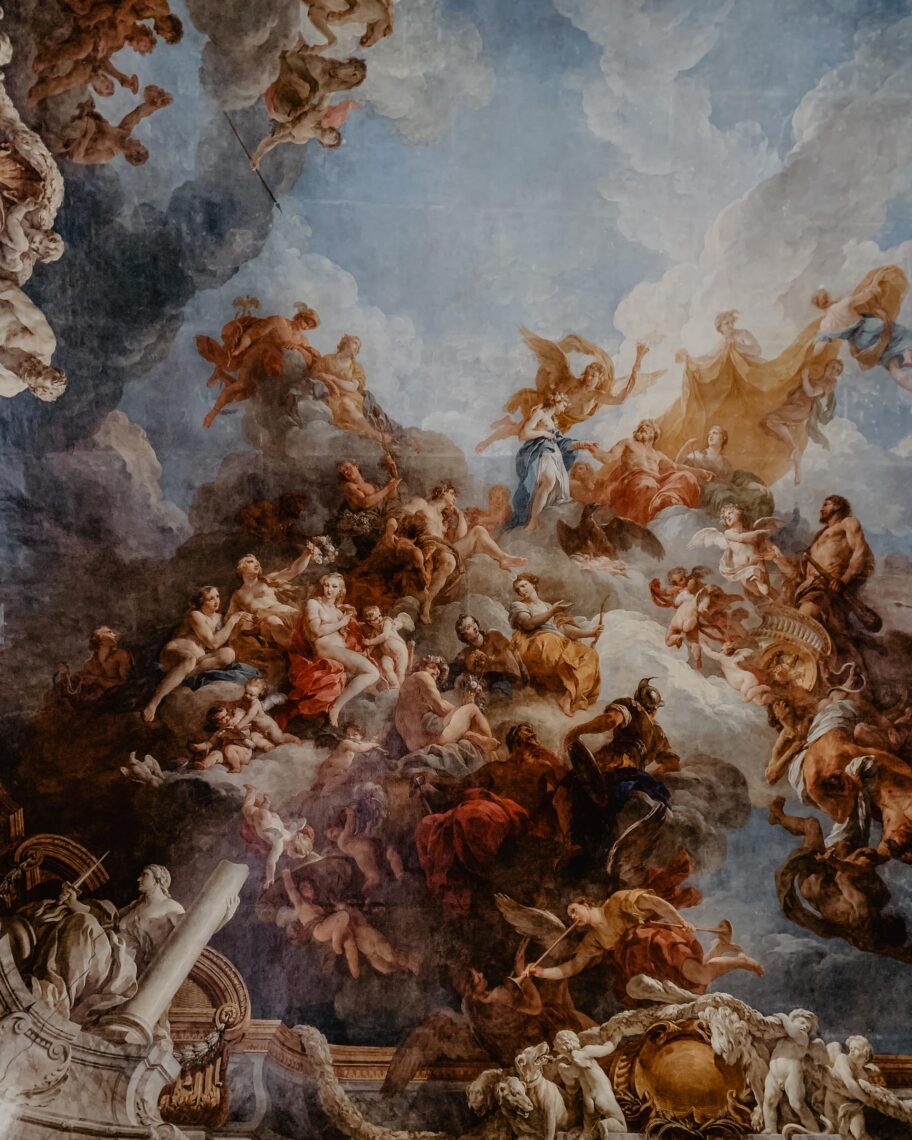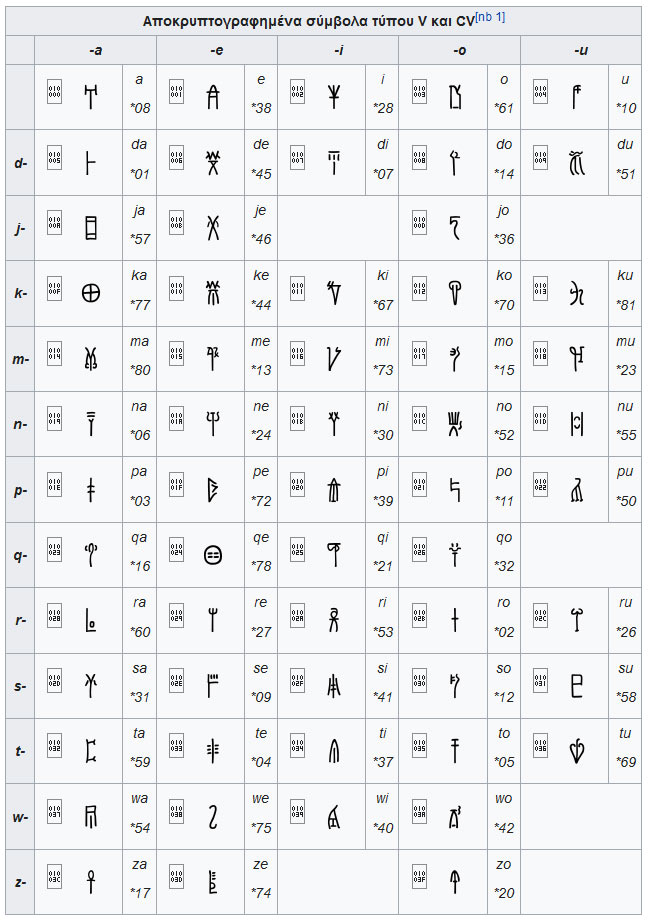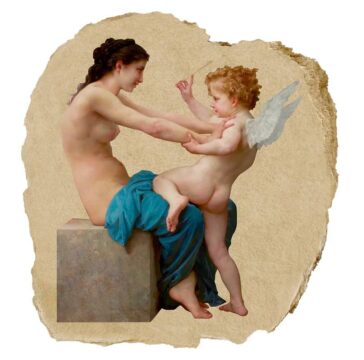Last updated on September 25th, 2024 at 12:04 am
Hold onto your laurel wreaths, because we’re about to unravel the juicy mythological secrets of ancient Greece.
You are in a world brimming with gods, monsters, and epic tales that could put your favorite binge-worthy series to shame. Greek mythology isn’t just a dash of flavor; it’s the whole seasoning rack of storytelling.
Now, let’s address the question that’s been circling the mythical cosmos: why did the Greeks go all out with their stories while other cultures kept it simple? I mean, most cultures are like, “Yeah, we’ve got a creation story, a couple of gods, and boom, the world explained.”
But the Greeks? They cranked the complexity knob up to eleven. Was it just a divine overachievement? A flair for the dramatic? Let’s unravel this like a mysterious prophecy.

The Greeks were like, “Who needs a basic creation story when we can have a buffet of epics?” And boy, did they have an all-you-can-eat epic spread.
Think of Homer and Hesiod, the rockstars of ancient storytelling.
These guys didn’t just weave tales; they spun entire mythological galaxies. The Iliad? The Odyssey? The Theogony? These weren’t just stories; they were like the Netflix series of their time, with gods, heroes, and monsters hogging the spotlight.
Now, here’s the scoop: those monsters you love to fear? A lot of them make their debut in Homer’s Odyssey. It’s like he thought, “Oh, let’s make Odysseus’ journey home a bit more interesting—giant one-eyed creatures, anyone?”
That’s right, the Greeks were all about “go big or go home,” even in the realm of mythical monsters.
But here’s the kicker: Homer and Hesiod weren’t historians with fancy degrees in ancient chronology; they were poets, weaving their tales based on whispers from the past.
Picture ancient people gathered around campfires, sharing stories that morphed with each retelling. It’s like that time you tried to retell a joke, and suddenly it was about a chicken that walked into a bar.
Enter the “dark ages” of Greek civilization, a period so mysterious it makes Indiana Jones’ adventures look like child’s play.
The historical records went on vacation, but guess what? Life and events were like, “Hey, we’re still happening, just no ink and parchment for us.” These untold tales floated around in the realm of oral tradition, like a never-ending game of historical telephone.
Then, along came Homer and Hesiod, armed with the task of capturing these tales in epic poems. They were like bards on a mission, turning passed-down whispers into the Iliad, Odyssey, and Theogony.
It was as if they were racing against time to bottle up centuries of history, drama, and myth before it all vanished like a mythical creature into the mist.
So, there you have it, the Greeks weren’t just telling stories; they were preserving a kaleidoscope of history, imagination, and cultural legacy.
Their myths weren’t just bedtime tales; they were the heartbeat of a civilization, echoing through time and captivating us with their tales of gods, heroes, and monsters that make modern blockbusters look like mere campfire stories.
Are epics History?
Gather ’round, history buffs and myth lovers, because we’re stepping into the ancient Greek arena of storytelling, where epic poems weren’t just tales; they were blockbuster narratives that blended historical happenings with fictional flair.
It’s like ancient Greece’s version of a Hollywood blockbuster, complete with heroes, wars, and some seriously embellished storytelling.
So, let’s start with the big names: Homer and Hesiod.
These guys weren’t just poets; they were like the J.K. Rowlings of their time, crafting epics that would make even modern novels look like mere novellas.
Homer, bless his poetic heart, penned the Iliad and the Odyssey around 760 BC, while Hesiod joined the party about 50 years later with the Theogony. These weren’t just poems; they were literary juggernauts that navigated the realms of myth, history, and everything in between.
And boy, did these poets play fast and loose with the “based on a true story” concept. Imagine taking historical events and adding a pinch of fictional spice to make them more appealing to the ancient audience. It’s like a history class infused with the creativity of a Broadway musical.
You see, these epic poems were like a canvas for both historical truths and, let’s face it, some seriously wild storytelling. And why not? They didn’t have IMAX theaters or Netflix back then. This was their version of binge-watching—a poetic feast that combined reality and imagination.
But hold onto your helmets, because the Greeks weren’t just throwing everything at the wall and hoping it stuck. They were like “MythBusters,” using their wits to separate the historical wheat from the fictional chaff.
Take the Trojan War and the city of Troy, for example. It’s like a historical version of “He said, she said.” Some folks were all, “Oh, Troy is a real thing!” while others were skeptical like ancient conspiracy theorists.
But let’s break it down: the Iliad is bursting with events, characters, and places. It’s like a history book that has a generous sprinkling of fantastical seasoning.
We might not know if Agamemnon was a real dude or just a poetic creation, but the culture of Mycenae and the Myrmidons, the legendary warriors of Achilles? Yep, those were as real as a Greek olive.
Now, let’s play detective for a moment. The sacrifice of Iphigenia, the stunning abduction of Helen, these stories? Yeah, we’re gonna file those under “fantasy.” But the rest? They’ve got that ring of logic and plausibility.
So there you have it, the ancient Greeks were like the ultimate storytellers, weaving history and myth together in a tapestry that’s both dazzling and dizzying.
These epic poems weren’t just entertainment; they were the archives of a civilization, preserving both the real and the imagined for generations to come.
It’s like stepping into a time machine where fact and fiction twirl together in a dance that’s as complex and captivating as any Hollywood blockbuster.
History through myths
Alright, fellow history detectives and myth unravelers, brace yourselves because we’re about to dig into a Trojan War theory that’s juicier than a pomegranate.
You’ve heard about Helen’s so-called “face that launched a thousand ships,” but what if I told you that those ships weren’t sailing for love, but for good old-fashioned economics? That’s right, it’s time to don your myth-busting gear and dive deep into the world of ancient maritime trade.
Ancient Greeks, setting sail like ancient traders of the Mediterranean, weren’t just looking for love; they were looking for lucrative trade routes.
We’re talking about the Black Sea, a region where Greek colonies had been sprouting like mythological mushrooms. These folks were all about the economic hustle, establishing connections and raking in profits like ancient venture capitalists.
And then there’s the city believed to be Troy. Imagine it like a medieval toll booth, but instead of coins, they’re collecting tariffs from merchant ships passing through the Bosphorus Strait.
It’s like ancient taxation, and the Greeks were like, “Hey, that’s our money!” So, what’s the logical step? A good old-fashioned war for control. Forget swords and shields; it’s all about who’s the real boss of the straits.
Now, hold onto your triremes because this theory gives us a glimpse into human nature that’s as timeless as Medusa’s snake-infested hair.
Whether it’s ancient battles or modern boardrooms, it’s all about power, control, and, of course, money. If we take this idea and slap a “2023” sticker on it, it’s like history repeating itself with a modern twist.
Those ancient Greeks weren’t just the founders of democracy; they were the OG power players of international trade.

But wait, the plot thickens. The Odyssey, Homer’s epic adventure, is like a greatest hits album of mythical monsters, magical witches, and unforgettable encounters.
And guess what? Some of these folks might not be purely mythical. Meet the Phaeacians, who practically put the “cruise” in “Odysseus.” These guys weren’t just sea legends; they were real island dwellers and Corfu? That’s their stomping ground, confirmed by more than just an X marking the spot.
And then there’s Calypso, the island enchantress who had a thing for stranded sailors. Think it’s all just ancient lore? Think again. There’s a cave on Othonoi, a Diapontian island, that carries her name. It’s like the ancient Greek version of a celebrity shrine.
But hold onto your helmets, because even the geography of the ancient world has its secrets.
Ithaca? That’s not just a poetic paradise; it’s the real deal. Well, kinda. The Ithaca described in the Odyssey might not exactly match today’s map. It’s like a puzzle that’s missing a few pieces, but hey, no map is without its treasure hunt.
And speaking of ancient tales with questionable historical bases, let’s not ignore the elephant, or rather, the titan, in the room.
Those epic battles between Titans and gods? Sounds like some fantastical WWE match, but what if they were more than just imaginary wrestling moves?
Could these be echoes of ancient conflicts, civilizations clashing like cosmic titans, and then passed down as myth? It’s like turning ancient history into the ultimate bedtime story.
So, there you have it, mythology isn’t just a bunch of bedtime tales; it’s the ancient world’s way of shouting, “Hey, remember us?” Through these tales, we uncover not just epic adventures, but the secrets of history and human nature.
From Troy’s economic tug-of-war to the real island escapades of Odysseus, mythology isn’t just a tale; it’s a breadcrumb trail leading us to ancient truths, embellished with just the right amount of mythical charm.
The Pelasgians and the Minoan civilization
Alright, fellow myth enthusiasts and history buffs, brace yourselves for a journey into the mysterious realms of ancient civilizations and mythological puzzles.
You see, when it comes to the past, it’s like peeling back layers of an ancient onion, and guess what? The Pelasgians and the Minoans are like those layers, filled with historical truths and mythological twists that’ll leave your mind spinning faster than a Greek philosopher’s thoughts.
So, let’s start with the Pelasgians, these enigmatic figures who were more than just myths; they were the real deal, like the cool kids of the ancient world.
Imagine a time when the Cyclades and Crete were buzzing with the Pelasgian crowd, this was a civilization that didn’t just dip its toes in history; it cannonballed right in.
Now, they weren’t just early birds; they were the early birds of early birds. Long before the Achaean civilization strutted its stuff in the Peloponnese and Mycenae, the Pelasgians were doing their thing.
These folks were like the pioneers of the ancient world, blazing trails and building foundations while others were still figuring out how to light a fire.
But hold onto your triremes, because things get even wilder.
You’ve probably heard of King Minos, the guy who might have been the real deal or just a tale as old as time. And that Minotaur? Yeah, that’s the stuff of myth, like something straight out of a fantasy novel.
But here’s the kicker: the labyrinth? Oh, it’s real, my friends. The very labyrinth where that legendary half-bull, half-human creature was said to roam was discovered by none other than Arthur Evans during his archaeological escapades in Knossos.
But let’s not forget the Minoans, the ancient island-dwellers of Crete who were like the trendsetters of their time. Imagine a civilization that rocked the Late Bronze Age, had its writing system called Linear A, and defined the term “living large” on the Mediterranean shores.
Linear A might be the ancient equivalent of encrypted emojis for all we know, but here’s the twist: it’s been found in archaeological digs like buried treasure waiting to be deciphered.
Now, the Minoans didn’t just fade into the pages of history; they went out with a bang, or rather, an eruption. The Thera, or Santorini, volcano might have been the ultimate party pooper, causing their civilization to crumble like a house of cards. It’s like the ancient world’s version of a cosmic mic drop.
And speaking of mysteries, imagine Linear A, a writing system so cryptic that even the most brilliant minds of our time are still scratching their heads.
This ancient code, dating back to 3000 BCE, is like the Rosetta Stone of the mind-boggling. It’s a reminder that for all our advancements, the ancient past is still holding onto some of its most intriguing secrets.
So there you have it, a whirlwind tour through the ages, where history, myth, and reality intertwine like the threads of a mythological tapestry.
From Pelasgians flourishing in the Cyclades to Minoans partying it up in Crete, these civilizations weren’t just stories; they were the heartbeat of an ancient world that’s still whispering its tales to us today.
It’s like taking a stroll through time and realizing that history’s layers are as complex and captivating as any epic tale spun by the bards of old.
The Mycenaeans took over Crete after the Minoan’s collapse
Ladies and gentlemen, time to buckle up for a journey that’s like a whirlwind through a labyrinth of ancient mysteries. We’re delving into the aftermath of the Minoan collapse and the rise of the Achaeans, a transition that’s more enigmatic than a Sphinx’s riddle.
The Minoans, those island partygoers, suddenly vanished like a magician’s trick, leaving a puzzling void.
So, the Achaeans of Mycenae, like the cool kids taking over the vacant mansion, might have swept in to snag the party favors.
But here’s where it gets even more intriguing than a treasure hunt: Linear A and Linear B. It’s like the Minoans left behind two locked chests, each containing a coded language.
Linear A is still a head-scratcher, like a cryptic crossword that nobody can solve. Linear B? Ah, that’s where the Greeks come barging in.
You see, those Achaeans weren’t just content with taking over the islands and Crete; they wanted to leave their linguistic mark too. Imagine them as ancient language hackers, tweaking Linear A and turning it into Linear B, a syllabary system that was the equivalent of giving the Greek language a fancy makeover.
This transformation? It’s like going from old-school flip phones to the latest smartphones, but with alphabets.
And here’s the kicker: Linear B? Yeah, that baby got deciphered. Like a master codebreaker revealing the secrets of a locked vault, scholars cracked the Linear B code, unveiling a world of tax records, inventories, and bureaucratic to-do lists.
Who knew ancient Greece had its version of Excel spreadsheets?
But why did Linear B give in to our decoding charms while Linear A remained a stubborn enigma?
Ah, here’s the twist: Linear A was like that puzzle piece that doesn’t quite fit. It’s not Greek; it’s a linguistic oddball, marching to a different beat. So, those Minoans? Maybe they weren’t chanting “Opa!” at their island fiestas; perhaps they were a non-Greek-speaking bunch who left behind an indecipherable linguistic fingerprint.
And that’s where the questions multiply like rabbits. Who were these Minoans if not Greek speakers? Where did they come from? Were they Mediterranean nomads? Or perhaps visitors from another realm? Were they linguistic pioneers who missed the memo about the Greek alphabet party?
It’s like trying to solve a mystery with a jigsaw puzzle missing half its pieces. Were the Minoans just an ancient civilization that decided to keep us on our toes for millennia, or were they wanderers from distant lands with a linguistic secret they never shared?
So, there you have it, a saga of linguistic twists, ancient parties, and a disappearance that rivals Houdini.
The Minoans, with their Linear A enigma, are like a riddle wrapped in a mystery inside an archaeological enigma. It’s a reminder that history isn’t just a straight line; it’s a maze of discoveries that keeps us on our toes, always one question away from unraveling the secrets of the past.
Origin of the Minoans
Alright, my curious time-travelers and history sleuths, gather ’round for a tale that’s like a DNA detective story, unraveling the ancient origins of the Minoans.
We’re diving deep into the annals of history, where theories clashed like mythical titans until modern science decided to drop the mic with some hard-hitting DNA evidence.
The Minoans, those enigmatic island dwellers, were like the ancient equivalent of a “Where in the World?” game show.
Some said they sprang from North Africa, others pointed at Anatolia or the Middle East, and all the while, historians and armchair archaeologists debated over cups of ambrosia.
But then, like a plot twist in an epic novel, DNA studies sauntered onto the scene. A dream team of researchers from the United States and Greece whipped out their genetic magnifying glasses and got to work on the skeletons of these ancient folks. Mitochondrial DNA, the time traveler’s passport, held the key to unlocking the Minoan past.
And lo and behold, the results were like the final revelation of a whodunit mystery.
Published in Nature Communications on May 14, 2013, these findings tossed ancient speculations into the mythical abyss. Drumroll, please: the Minoan civilization didn’t descend from some distant corner of the world; it sprouted right from the fertile soil of Bronze Age Crete.
It’s like the Minoans were the OG inhabitants, not intergalactic settlers or ancient globetrotters.
These weren’t newcomers; they were the descendants of the very first humans to set foot on Crete, about 9,000 years ago.
It’s like uncovering a long-lost family tree, and guess what? They’ve got the greatest genetic resemblance to modern European populations. It’s like they left a trail of breadcrumbs through time, and those breadcrumbs led right back to our modern doorstep.
So, let’s shatter some myths, shall we? Those Minoans weren’t a mysterious exotic import from some far-off land; they were the homegrown locals of Crete, with a dash of timeless genetic resemblance to modern Europeans.
And while their culture may have absorbed influences from distant places, their genetic roots remained firmly planted in the soil they called home.
This revelation is like a triumph of history over speculation, of science over myth. It’s a reminder that while the past may be shrouded in mystery, DNA can be the key to unlocking its secrets.
So here’s to the Minoans, those Bronze Age pioneers who left their genetic mark in the sands of time. And here’s to the researchers who wielded their genetic wands, turning speculation into scientific truth, and putting an end to millennia-old debates.
Linear B – The first Greek script
Alright, fellow history buffs and word wizards, prepare to embark on a journey through the ancient scriptiverse, a tale of evolution, deciphering feats, and cultural time capsules that’ll leave you in awe of the past’s intricate dance.
Our star player? Linear B, the writing system that’s more than just squiggles on clay tablets; it’s a window into the linguistic evolution of Greece.
Imagine clay tablets scattered across ancient Greece like archaeological breadcrumbs. Linear B, the cool kid on the writing block, made its grand entrance around 1650 BCE. It’s like the sequel to Linear A, with a twist.
You’ve got Aegean islanders, Cretans, and the Mycenaeans all getting in on the action. It’s like a linguistic party where syllables are the secret handshake.
And here comes the plot twist: a young architect named Michael Ventris, armed with a passion for puzzles, decides to tackle the enigma of Linear B.
Enter John Chadwick, the philologist with a penchant for linguistics. Together, they’re like the Batman and Robin of deciphering. In 1952, these legends cracked the Linear B code, turning ancient scratches into a symphony of words.

But hold onto your clay tablets, because Linear B isn’t just hieroglyphic hieroglyphics. It’s like each character is a mini-language superhero, representing syllables in a symphony of ancient sounds.
Imagine if emojis were a secret code that held the secrets of a forgotten language.
Speaking of characters, Linear B’s got 89 of them, all ready to perform syllabic acrobatics.
But wait, there’s more! Around 260 logograms, tiny linear icons, are like the MVPs of quick communication, each standing in for a whole word. And let’s not forget the number symbols; ancient accountants were out here, even back then.
But guess what? Linear B isn’t just a writing system; it’s like the earliest remix of the Greek language. Deciphering it was like opening a time capsule to find the language of Zeus and Poseidon, with a dash of an archaic dialect.
Think of it like reading Shakespearean English in the 21st century, only way more ancient.
But as they say, all good things must come to an end. The Mycenaean civilization hit a rough patch around 1200 BCE, and Linear B’s curtain call was around 1100 BCE.
It’s like the end of an era, but fear not, because the phoenix of culture and language was ready to rise from the ashes.
Enter the pre-classic Greek civilization, reborn like a mythological phoenix around 800 BCE. With a new script in hand, the Greek alphabet, these folks were ready to carry the torch of language and culture forward.
And here’s where the plot thickens: the names of deities, those rock stars of the ancient pantheon, Zeus, Hera, Poseidon, didn’t just vanish; they were there in the new script, unchanged like timeless constellations in the linguistic sky.
And here’s the takeaway, folks: even in the dark abyss of illiteracy and cultural slowdown, the thread of continuity held strong. Names like Zeus, Poseidon, and a host of other mythological all-stars were like an unbreakable chain, connecting the dots between Mycenaean times and the classical age.
It’s like cultural DNA that survived even the harshest winters of time, reminding us that history isn’t a series of isolated events; it’s a symphony of stories and languages that play on, connecting past and present like harmonious echoes across the ages.
Read More from Greek Mythology
Ancient Goddesses: Powerful Women in Greek Mythology
The presence of Goddesses and powerful women in Greek mythology is vast; in fact, it is not inferior to that of men, and in many instances, it surpasses it.
The Olympic Games in Ancient Greece
The Olympic Games in ancient Greece were a major sporting and cultural event that took place every four years in Olympia, a sanctuary dedicated to the god Zeus.
Revealing Most Important Figures of Greek Mythology
Greek mythology is a rich tapestry of divine beings and stories, with each generation of gods possessing its own unique qualities, roles, and rulers.
The Most Famous Tales in Greek Mythology
Greek mythology tales aren’t just a collection of stories; it’s a cosmic symphony that’s been playing for centuries, and its timeless themes and characters will keep us under its spell for eons to come.
Great Heroes in Greek Mythology and Their Labours
Ancient Greek heroes were individuals who were believed to possess extraordinary abilities or qualities, and who performed great feats.
The 12 Labours of Hercules in Greek Mythology
Herakles (Hercules), performed twelve Labors to prove himself worthy of immortality, facing many monsters, villains, and challenges.









Comments